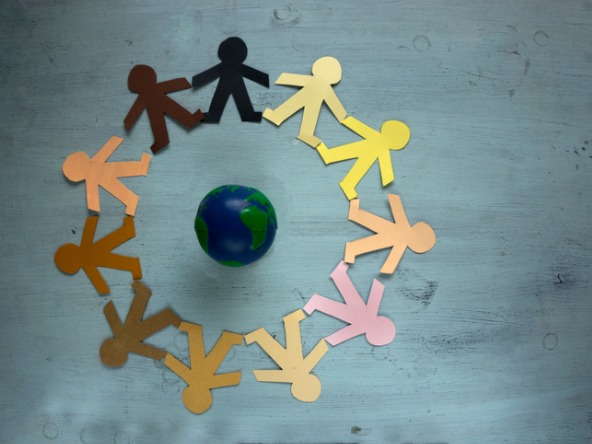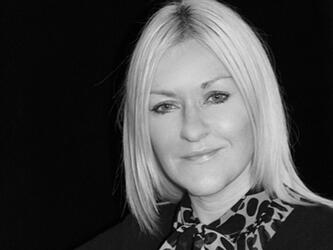We must do more to create diverse environments

As employees, consumers and citizens demand corporations address broader societal issues – we are moving into a more responsible era. Conversations around diversity and inclusion have rightly grown in the marketing industry around issues of representation, equity, and authenticity. Creating truly diverse and inclusive environments is the new imperative for all, but what do organisations need to do to stay authentic and make sure they are not just scratching the surface?
At Kantar, we have a responsibility to reflect diverse societies, not just in the data we produce but, in our teams, and our leadership, as well as ensuring our client offering and go to market approach is as inclusive as possible.
Diversity and Inclusion is now something we’re seeing our clients demanding of us, they want to know what we are doing in our work and are increasingly asking to see diversity credentials as part of procurement exercises.
Despite our on the ground experience, our research has shown only 52% of companies are actively working on inclusion and diversity (D&I) initiatives according to their employees (indicating that half are not). Aside from ethics, D&I makes business sense, yet too often commercial opportunities are being missed. The LGBTQ+ community for example, represents greater than 5% of the world’s population, has more than $3.9 trillion of buying power, and is one of the fastest-growing markets, yet just 1% of adverts overtly show LGBTQ+ individuals, leaving a huge underrepresented and untapped gap.
Gender equality – the fight is still on
It’s easy for businesses to assume that the problem of gender equality has been completed, however, it’s still an important conversation that needs to be had, especially in terms of intersectionality, so is something we can’t consider has been ‘ticked off’.
Covid-19 has set back the global gender gap with data from the World Economic Forum suggesting we are not set to reach gender parity for 136 years, up 36 years from prior to the pandemic. Covid-19 brought unprecedented disruptions that burdened many women with trying to balance work and home along with maintaining their own wellbeing.
Additionally, the pandemic has had a big impact on representation: 5% of all employed women lost their jobs, compared with 3.9% of employed men, according to Kantar’s Global Monitor report, and LinkedIn data further shows a marked decline of women’s hiring into leadership roles, creating a reversal of one to two years of progress across multiple industries. Currently less than 8% of Fortune 500 chief executives are women and these figures are even worse for women from ethnic minorities and LGBTQ+ women.
Moving women through the pipeline all the way up to senior roles is key. In many cases, the problem is not recruiting women into the workplace, it’s encouraging them to stay when they come up against changes in their personal life or start thinking about starting their own ventures.
As part of the Women Business Collaborative’s (WBC) global advisory council, I’ve been working with executives, organisations, and partners to build a network of senior female executives by developing support infrastructure and promotional activities to achieve equal power, position and pay for women in business. Post-Covid-19 this is even more critical. We’ve learnt to be more accommodating to remote and flexible working, for example, contributing to keeping women in the workforce by enabling a better work-life balance around childcare and caring responsibilities.
Delivering D&I through better research practices
As an industry there is a need to work on methodology to ensure as researchers, we truly capture a reflection of our audiences. Static categorisations and data collection methods can quickly become outdated and fail to paint the full picture. Data approaches also need to be intersectional to avoid potentially misleading single-characteristic analyses.
Research plays an important role in not just recording what’s going on in society but directly influencing decisions that are made. If the data we produce fails to be representative, then societal trends will not be correctly understood and it’ll be much harder to make progress.
For example, the best-practice guidelines for ‘nationally representative’ (‘nat rep’) definitions in the UK are in the process of being updated in a collaborative effort between agencies, clients and the Market Researcg Society (MRS) to include the full diversity of gender presentation, ethnic origin and disability. It’s a step in the right direction, but there is still more that can be done to remove barriers to participation and exclusion of perspectives.
An awareness of cultural differences and global trends is also crucial. At Kantar, we developed an app for surveys in countries where our usual online approach wasn’t working due to lack of access to email addresses in regions like India, allowing us to capture a truer representation of those populations. We won’t change the industry overnight but, in the meantime, there should be greater transparency about who exactly we have spoken to in our research projects and more importantly who we haven’t.
Leading by example
As leaders we must get better at stepping out of our comfort zone when it comes to diversity and inequality, and most importantly be an ally. Stakeholders need to be sure that genuine action is being taken to believe that leaders truly care about championing diverse voices.
I’ve done a lot of work providing sponsorship and guidance to this group of volunteers who are committed to making Kantar a beacon to the LGBTQ+ community by creating a culture that is genuinely, authentically inclusive. Together we are turning awareness into action by helping brands and organisations have a more authentic voice with the LGBTQ+ community via our Inclusion Index, our Inclusion Insights Monitor and by conducting work that shines a spotlight on underrepresented groups, including the largest-ever LGBTQI women’s insight survey during lesbian visibility week, to better-understand where and how the needs and experiences of LGBTQI women differ from cisgender and/or heterosexual counterparts.
Additionally, the MRS Diversity Inclusion and Equality council set up in 2020 has already done great work encouraging members to take part in the 10,000 black interns’ programme. As part of this council and as Profiles chief executive, I’ve also helped create and signed ‘The CEO Pledge’ which asks chief executives to make five commitments towards creating safer and more representative workplaces including, publishing pay statistics annually, working towards government targets for women and ethnic minorities at board level and improving recruitment practices.
To make the industry and the way we work truly diverse and inclusive, marketers need to join up their approach by making sure everything they do represents a diverse society. From robust research and sampling methods to representative advertising and championing inclusivity in the workplace through strong leadership, organisations who will be the most successful in the future will be those that place diversity and inclusivity top of the business agenda.
Caroline Frankum is chief executive at the Profiles division at Kantar.

We hope you enjoyed this article.
Research Live is published by MRS.
The Market Research Society (MRS) exists to promote and protect the research sector, showcasing how research delivers impact for businesses and government.
Members of MRS enjoy many benefits including tailoured policy guidance, discounts on training and conferences, and access to member-only content.
For example, there's an archive of winning case studies from over a decade of MRS Awards.
Find out more about the benefits of joining MRS here.













0 Comments